#richard russo
Text

Title: Empire Falls | Author: Richard Russo | Publisher: Vintage (2002)
3 notes
·
View notes
Text








What a journey to see all these people together.
PSH and Paul Newman being rivals in a Richard Russo story before "Empire falls". Melanie and Bruce married after he played the lawyer going after her lover in "The Bonfire of the vanities"...and one of the two posthumous films of Jessica Tandy.
I wish it was better.
Nobody's fool (1994)
#nobody's fool#nobody's fool (1994)#paul newman#melanie griffith#bruce willis#jessica tandy#richard russo#dylan walsh#margo martindale#phillip seymour hoffman#catherine dent
4 notes
·
View notes
Quote
Dovremmo concentrarci su quello che possiamo cambiare e non su quello che non possiamo controllare
“Le conseguenze”, R.Russo
52 notes
·
View notes
Text
TV Review: Lucky Hank
What got my attention immediately about the new AMC TV series Lucky Hank is Bob Odenkirk. He is one of my favorite actors working today. Earlier this year, I named the final season of his series Better Call Saul my #1 TV Show of 2022 and I also got to cover his Hasty Pudding Man of the Year award at Harvard. He has had such an extraordinary trajectory: comedy writer for SNL, performer and cast member on The Ben Stiller Show and Mr. Show, to more serious acting in Breaking Bad / Better Call Saul, Nebraska, Fargo, and even an action movie like Nobody. Less than a year after BCS ended, he is back on an AMC series as Professor Hank Devereaux.

Season 1 poster
Hank is the english department chairman at an underfunded PA college. He and his wife Lily (Mireille Enos of AMC’s The Killing) live in suburbia, but sometimes dream of NYC and in fact she is seeking a job there. Hank’s father is a renowned author and professor and he hasn’t had any contact with him in 15 years. His grown daughter Julie is now married and having issues with her husband. Hank’s English department staff are not big fans of his handling of the department. The one salace he has is his friend Tony (Diedrich Bader of Veep). The entire series begins with Hank ranting on a student, which creates quite a stir.
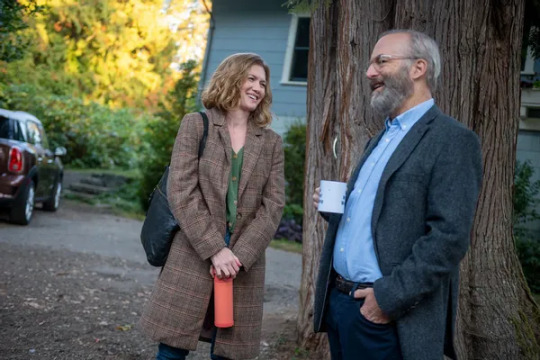
Enos and Odenkirk
What I love about this series is the way it shows one character getting hit from all sides: his wife, daughter, staff, faculty, students, and parents are all getting on him about something, in some cases multiples in the same scene. It’s not too often you see this happening effectively, the exception coming to my mind is Paul Thomas Anderson’s Punch Drunk Love, in which Adam Sandler’s character is getting hit from all sides within a single scene. In Lucky Hank, the protagonist is straddling a line between midlife crisis and full-on meltdown and it takes an actor of Odenkirk’s caliber to straddle that line between snarky cynicism and depression from suppressed trauma, while maintaining a degree of humor. And his entire English department staff is such a unique set of scene-stealers: extreme intelligence, but so critical and competitive with each other. As much as I enjoyed this show and it being a showcase for Odenkirk and the cast, I did wonder after the season finale (semi-spoiler) if the writers went all in on this season and where could it go from here? I guess we’ll have to see. In the meantime Odenkirk has swung it out of the park again!
For info on Lucky Hank: https://www.amc.com/shows/lucky-hank--1061358
4 out of 5 stars
2 notes
·
View notes
Text

Empire Falls, by Richard Russo
Rory Gilmore Reading Challenge
#just finished#reading#books#rory gilmore reading challenge#empire falls#richard russo#american writer#american literature
1 note
·
View note
Text
Richard Russo - Von guten Eltern.
Richard Russo - Von guten Eltern. #Roman #NorthBathTrilogie #Lesejahr2024 #Literatur #DuMont #Amerika #USA #Lesen #Buch #Buchempfehlung
Mit der aktuellen Neuerscheinung “Von guten Eltern” endet die North-Bath-Trilogie von Richard Russo, einem meiner absoluten Lieblingsautoren. Kurz und bündig: auch dieser Roman ist ein absoluter Page-Turner und zeichnet ein deutliches Bild der amerikanischen Provinz, dazu bietet er einmal mehr wunderbare erzählerische Details und ein Wiedersehen mit skurrilen und liebenswerten Figuren der ersten…
#Amerika#Bücher#Buch#Buchbesprechung#Dumont Verlag#Ein grundzufriedener Mann#Ein Mann der Tat#Kritik#Lesejahr 2024#Lesen#Literatur#North Bath#Rezension#Richard Russo#Roman#Trilogie#USA#Von guten Eltern
0 notes
Text
after all, what was the whole wide world but a place for people to yearn for their hearts’ impossible desires, for those desires to become entrenched in defiance of logic, plausibility, and even the passage of time, as eternal as polished marble?
-richard russo, empire falls
0 notes
Link
Richard Russo is an American novelist, short story writer, screenwriter, and teacher. In 2002, he was awarded a Pulitzer Prize in Fiction for his novel Empire F...
Link: Richard Russo
0 notes
Text
„"Yes, dear. An excellent idea," Charles Beaumont Whiting agreed and in that fateful moment became Charlie Whiting. Later in life, he was fond of remarking, rather ruefully, that he always had the last word in all differences of opinion with his wife, and that two words, actually was, "Yes, dear." Had he known how many times he would repeat that phrase to this woman, how it would become the mantra of their marriage, he might well have recollected the river's invitation and committed himself to its current then and there and followed the moose downstream, thereby saving himself a great deal of misery and the price of the handgun he would purchase thirty years later for the purpose of ending his life.
"And would you mind putting out that awful cigar?" Francine Robideaux added.“
Richard Russo: Empire Falls, New York 2002, S. 18.
1 note
·
View note
Text
In Richard Russo's World, Everybody is Somebody's Fool
Thirty years after he started it, Richard Russo delivers another delightful story about the citizens of North Barth, NY.
Known as the North Bath trilogy, Richard Russo refers to it as his ‘Fool series.’ His latest, Somebody’s Fool (2023) follows Everybody’s Fool (2016) and Nobody’s Fool (1993).
So much has happened in the little upstate New York town of North Bath that Russo has his work cut out for him bringing us up-to-speed. Instead of the colorful characters immediately resuming their tragicomic drama, Russo…
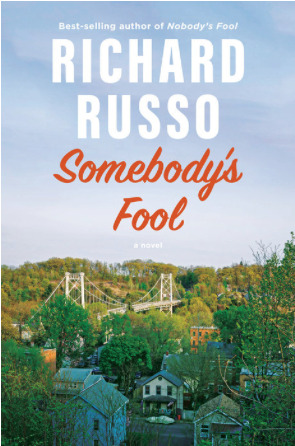
View On WordPress
0 notes
Text
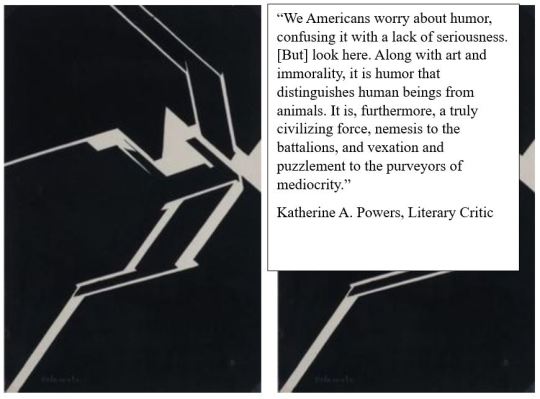
#powers#richard russo#book#destiny thief#humor#america#dark#bookcore#dark academic aesthetic#quotes#words#quotations#literature#beautiful words
0 notes
Quote
Basta tirare un filo della trama del destino umano e tutto si dipana.
Però potremmo pure dire che le cose hanno la tendenza a dipanarsi anche da sole
“Le conseguenze”, R.Russo
7 notes
·
View notes
Text

Rene Russo by Richard Avedon
- Vogue, May 1974
20 notes
·
View notes
Text
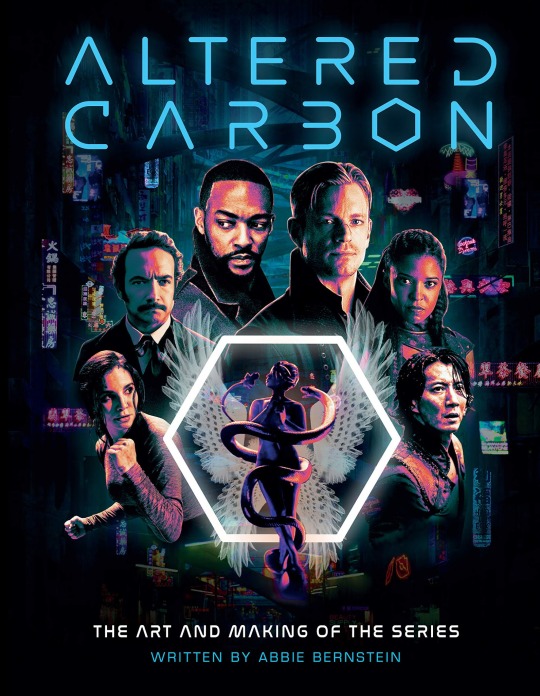
Hello everyone!
The series I will introduce to you today is an American science fiction series categorized as cyberpunk. Created by Laeta Kalogridis (Avatar, Shutter Island, Alita: Battle Angel) and based on the novel of the same name written by Richard K. Morgan which was written in 2002, the first season of the series was commissioned by Netflix in 2016 and was released on the streaming platform in 2018. I'm going to tell you about the Altered Carbon series.
As always, let's start with a short synopsis: In a future where humans can transfer their minds from one body to another, Takeshi Kovacs -a rebel- is brought back to life 250 years after his death to solve the vicious murder of the richest man in the world -Laurens Bancroft- in exchange for his freedom. He must find allies, pay attention to every detail, and remember what he was taught as a diplomatic corps to succeed.
And a short technical presentation :
- Created by Laeta Kalogridis.
Based upon Richard K. Morgan's Altered Carbon trilogy.
- Music by Jeff Russo.
- Main cast: Joel Kinnaman, Renée Elise Goldsberry, James Purefoy, Kristin Lehman, Martha Higareda, Dichen Lachman, Chris Conner, Ato Essandoh, Trieu Tran, Anthony Mackie, Lela Loren, Simone Missick, Dina Shihabi, Torben Liebrecht.
THE PRODUCTION
As I said in the introduction, Netflix ordered the series in January 2016, fifteen years after Laeta Kalogridis - the series's creator- optioned the rights for a film adaptation of Richard K. Morgan's 2002 novel Altered Carbon. According to her, the complex nature of the novel and the fact that the subject matter is rated R made it difficult to sell the project to a production company. But that was before Netflix launched the project as a series! In fact, the series was one of the many dramas commissioned in a short space of time by the streaming platform, which had committed to spending $5 billion on original content and agreed to make it a project for a mature audience over the age of 16.
Laeta Kalogridis co-wrote the script and was executive producer in addition to her role as creator of the project. Richard K. Morgan, the author of the novel, acted as a consultant during the production of the series. The first season - consisting of 10 episodes - was released in 2018 and the second season - consisting of 8 episodes - will be released in 2020.
In 2018, Netflix also announced an animated film derived from the series to ‘expand the universe’ by adding new elements to the story's mythology.
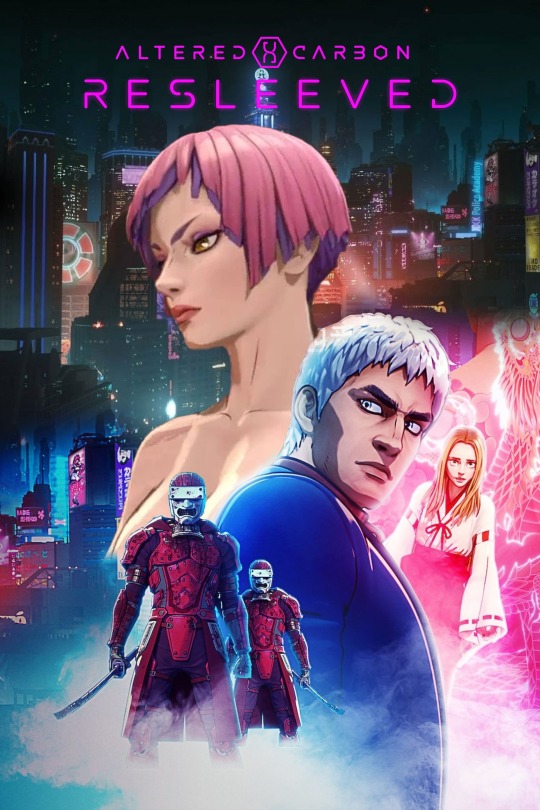
Titled Altered Carbon: Resleeved and released in March 2020, a month after the release of season 2, the feature film uses character designs by manga artist Yasuo Ōtagaki (Moonlight Mile). It is written by Dai Satō (Ghost in the Shell, Cowboy Bebop) and Tsukasa Kondo, directed by Takeru Nakajima (Sword Art Online) and Yoshiyuki Okada, and produced by Anima Studio. It also features an original soundtrack by Keigo Hoashi (Square Enix's Nier franchise) and Kinuyiki Takahashi.
Following the release of the second season and the animated film, Netflix decided in April 2020 not to renew the series. Unlike the cancellation of other series, the decision to cancel Altered Carbon was not linked to the COVID pandemic but stemmed from the lack of return on viewings to the production costs. In fact, the series is the most expensive Netflix production to date and, although production costs have not been disclosed, Joel Kinnaman - who plays Takeshi Kovacs, the series' lead character - said they had “a bigger budget than the first three seasons of Game of Thrones”.
Enough introductions, it's time to get to the heart of the matter! To be perfectly honest, I didn't enjoy watching this series, but I'll come back to that later. I didn't manage to watch it in full and haven't seen the film, although I'll give it a chance one day. In my observations and remarks, there could be questions that remain with me and which may have been answered in the episodes I couldn't bring myself to watch.
THE UNIVERSE
But let's start by giving you more information about the universe into which the series plunges us. The first season takes place in 2384, in a futuristic city called Bay City. In this future, a person's memory and consciousness can be stored on a disc - called a stack - implanted in the back of their neck. The shell can be human or synthetic. In the event of physical death, these storage discs can be transferred to a new envelope. However, if a person's disk is destroyed, then their death is final. While theoretically, this means that anyone can claim immortality, in practice only the richest people - the Meths - have the means to do so through the use of clones and remote back-ups of their consciousness. But these are very expensive and so reserved for a certain financially comfortable elite.
In this reality, Takeshi Kovacs - played by Byron Mann (Skyscraper, The Big Short) in flashbacks - is a political agent with mercenary skills. He is the only surviving soldier of the Envoys, a rebel group defeated during an uprising against the New World Order.
In the first season, which takes place 250 years after the destruction of the Envoys, Kovacs' stack is pulled from the prison where Kovacs was sentenced by Meth Laurens Bancroft. Played by James Purefoy (Solomon Kane, Churchill, Rome), the 300-year-old Bancroft is one of the richest men in the established worlds. Bancroft offers Kovacs a new shell - played by Joel Kinnaman (RoboCop, Suicide Squad) - and the chance to solve a murder and get a new lease on life.
The second season of Altered Carbon begins 30 years after the conclusion of season 1 and finds Takeshi Kovacs - played by Anthony Mackie (Captain America: Civil War, Black Mirror, Notorious) - the sole surviving soldier of an elite group of interstellar warriors, continuing his age-old quest to find his lost love, Quellcrist Falconer - played by Renée Elise Goldsberry (Hamilton, The Good Wife, Masters of Sex). The season picks up some of the characters from Broken Angels - the second book in the series - but has a plot closer to that of the third book in the series, Woken Furies.
THE POST-CYBERPUNK GENRE
The term post-cyberpunk was first used around 1991 to describe Neal Stephenson's science fiction novel Snow Crash.
In 1998, in an article entitled Notes for a post-cyberpunk manifesto, the writer and critic Lawrence Person identified the emergence of a post-cyberpunk current. Cyberpunk was popular in the late 1970s and 1980s (Ridley Scott's Blade Runner, William Gibson's Neuromancer). Lawrence Person defines post-cyberpunk as ‘bringing in characters and settings different from cyberpunk, and, above all, making fundamentally different assumptions about the future. Far from being lonely outsiders, post-cyberpunk characters are often an integral part of society. They evolve in a future that is not necessarily anti-utopian (in fact, they are often bathed in an optimism that ranges from caution to exuberance), but their daily lives remain marked by rapid technological renewal and ubiquitous computerized infrastructure.’ (Notes for a post-cyberpunk manifesto, 1998).
The following are the main differences between post-cyberpunk and cyberpunk:
Like its predecessor, post-cyberpunk describes a realistic near-future rather than distant futures set in space. The focus is on the social effects of technology deployed on Earth rather than on space travel.
Cyberpunk typically deals with addicted loners in a dystopia, whereas post-cyberpunk tends to deal with people who are more involved in society, from the middle classes of the population, and there are very detailed descriptions of the characters' environment.
The post-cyberpunk individual tends to be warm and funny, attempting seduction through optimism after years of seduction through dread with the cyberpunk individual, who is colder and more sinister.
In cyberpunk, the alienating effects of new technology are highlighted, whereas in post-cyberpunk, technology is society. Post-cyberpunk therefore allows more technocratic themes and themes relating to the downside of technology to be included than cyberpunk.
Post-cyberpunk also offers a more realistic description of computers, consisting, for example, of the replacement of traditional virtual reality by a network of voice, image, sound or holography based on the Internet, or the abandonment of metallic implants in favor of body modifications using biotechnologies (particularly nanotechnologies).
Post-cyberpunk undoubtedly emerged in part because science fiction writers and the general population were beginning to use computers, the Internet, and PDAs without suffering the massive digital divide predicted in the 1970s and 1980s. The underlying idea was therefore to humanize the construction of cyberpunk universes and bring them closer to the life that the world's population could envisage in the future with the new technologies that were flourishing. The nightmarish visions engendered by the genre, including and especially in the popular imagination, covered what such a future could contain that was desirable. This is not to say that technological paradise is just around the corner, but that it is possible to be healthy and sane in a hyper-technological universe.
Emblematic works of the genre such as Masamune Shirow's Ghost in the Shell, and the video games Deus Ex and Deus Ex: Invisible War by Ion Storm, Deus Ex: Human Revolution and Deus Ex: Mankind Divided by Eidos Montreal have all played a large part in democratizing the genre among a wider audience.
DIFFERENCES FROM THE NOVEL
As I haven't read the books, I'm giving you the information as I found it during my research into the series. I think I'll try to read the novels one day because, like the animated film, I'm very interested in the theme. As someone afraid of the direction our society is taking, of its relationship with technology, and in particular of its untimely and irrational use of artificial intelligence, I'm always interested in the warnings that artists try to convey through their work, whatever the medium. And I like to think that just because I didn't like an adaptation - it can happen - doesn't mean that the original material isn't worth discovering.
The first season is based on the novel Altered Carbon by Richard K. Morgan, published in 2002. This is the first volume of a trilogy recounting the adventures of Takeshi Kovacs, a post-cyberpunk techno-thriller series set on the West Coast of the United States at the end of the twenty-fifth century. Although the adaptation retains most of the main plot points of the first volume, the series introduces several major changes to its characters and organizations:
In the novel, the Envoys are elite soldiers of the Earth-based United Nations Protectorate, the complete opposite of the rebel freedom fighters portrayed in the series, who hail from Harlan's World where Takeshi Kovacs was born.
In the book, Takeshi Kovacs was imprisoned for his independent work after leaving the Envoys, whereas in the series, Kovacs is a captured rebel.
Reileen Kawahara's character in the novel was merely Kovacs' ruthless underworld boss and had no blood relationship with him, unlike their brother/sister relationship in the series where she is played by Dichen Lachman.
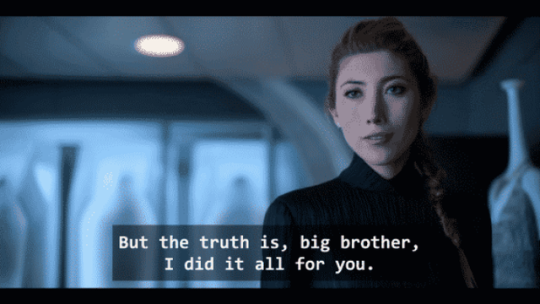
The Envoy who trained Kovacs in the book was Virginia Vidaura, whereas in the series she is only a minor character. The role of her trainer and her story are carried over to the character of Quellcrist Falconer, who in the third book is the messiah-like historical figure.
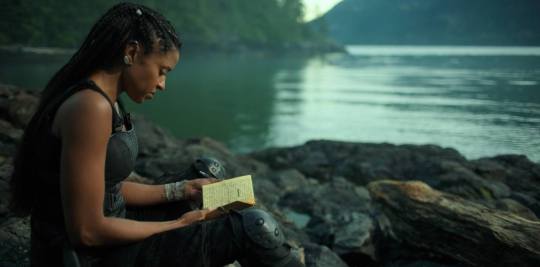
Falconer's rebellion did not take place during Kovacs' training, as in the series, but long before Kovacs was born in the books.
In Richard K. Morgan's novel, the Hendrix Hotel is a crucial character. It's not just a Jimi Hendrix-themed building, but also an artificial intelligence in the guise of Jimi Hendrix that has a strange bond with its only guest, Takeshi Kovacs. With Hendrix's estate refusing to license his image for the TV series due to its violence, series's creator Laeta Kalogridis chose the likeness of Edgar Allan Poe - played by Chris Conner - and a Victorian hotel for the replacement AI in Poe's image and said it would juxtapose well with the futuristic look of Bay City.
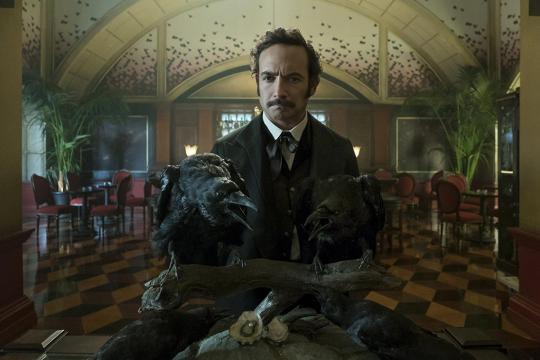
In the books, Kristin Ortega - played by Martha Higareda- is a much less important character. The main female character in the series, the dedicated detective doesn't have a devastating fight with the Ghostwalker, nor does she get a new super-powered arm. Her subplot with her family and religion isn't explored in the book and she isn't captured and tortured by Rei - although she is tortured all the same. Also, in the book her partner is called Rodrigo, not Aboud, and he doesn't date her mother.
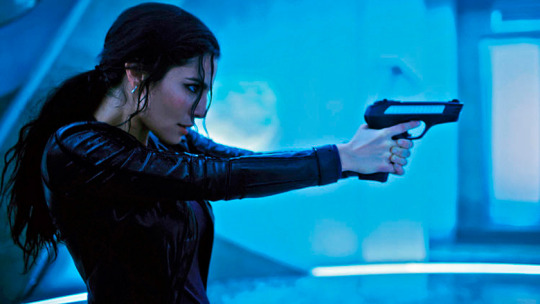
And these are just some of the changes that were made when the novels were adapted for Netflix.
THEMES
Let's move on to the themes addressed in this dystopian work. Many of the themes addressed by the series - such as the human-machine interface, the alliance between technology and our society, cyberspace and objective reality, hyper-urbanisation and artificial intelligence - are recurring themes in cyberpunk and post-cyberpunk works.
Because of the technological implications, the subject also raises moral questions. Is murder always immoral if it is consensual and the victim can be reimplanted in a new body in the space of a few minutes? The police themselves issue permits for spectacular fights to the death, organized in the homes of the rich, with husbands and wives teaming up to fight to the death for entertainment (the winner receiving a new, improved body).
However, another major implication was raised during the first season of Altered Carbon, which Laeta Kalogridis herself underlines: the separation of soul and body and the question of gender identity. If you could choose your own body, would you choose the one you were born with? This is a critical question for transgender people or those whose gender is fluid, and, for the show's creator, the subject was only touched on in this first season. However, she told TheWrap in 2019 that she would like to explore this dimension in more detail :
“The idea that this kind of technology creates interesting intersections between your idea of your physical self and your idea of your inner or spiritual self, or your idea of being fluid in some way, certainly the idea of reassigning your gender, becomes a whole lot easier if you don’t actually have to do it surgically. At the very least it becomes different. You are still in a body you weren’t born in. And I think exploring the idea of being able to recreate the physical self in another different way, I mean we’ve barely scratched the surface of that. And LGBTQ, and so many issues, and the ways in which we feel comfortable or uncomfortable in our physical bodies, are things that I think the show is very right to explore but has not yet been able to do. Certainly first season. We touched on it a little bit — but not much. I mean if we did get a second season — which we don’t know yet — but if we were to get a second season, I would definitely say that was one thing we frankly didn’t have time to touch on and wasn’t dealt with in the book at all. We went a little further than the book did, but honestly, it was just about time.”
What's interesting to me about these themes is that the creators - Richard K. Morgan and Laeta Kalogridis - are both aware that technological developments of all kinds are changing the structure of the world, just as cars, air travel, the Internet, and cell phones have done, and that they're not trying to wrap a soft pink cloud around the dangers that could await us in a few decades.
COSTUMES
There's one aspect that surprised me, it's the costume work in the series. Having read that the production had created approximately 2,000 costumes for the series, including 500 unique, made-to-measure pieces, I was expecting to get a real kick out of this. And although the work of Ann Foley (Marvel's Agents of SHIELD) for season 1, Cynthia Ann Summers (The Last of Us) for season 2 and their teams is visible, I was expecting more grandiose costumes, especially for the Bancrofts who are one of the wealthiest families on Earth at the time of the story. The artistic direction chosen was to make simple, realistic costumes to illustrate the fashion of the future, while adding a color palette and specific details, notably for the Meths.

However, I really like the idea of subtle costume changes for characters who use the same body envelope to differentiate them, as with Miriam Bancroft and her daughter Naomi - both played by Kristin Lehman. Upon this subject, the actress declared that she was very interested in the challenge this ambivalence would require and that it was quite different from her usual roles.
SHOOTING LOCATIONS
The series was mainly filmed at Skydance Studios in Vancouver, Canada, where they stayed for eight months to shoot the first season. Most of Altered Carbon's scenes were created on green screen and in CGI to accentuate the futuristic effect of the universe.
Lead actor Joel Kinnaman told Canadian publication K5 News about the shoot:
"We had a set three soccer pitches deep. Around 400 or 500 extras were bustling around us, it was a real living city, with noodle stores, construction workers and police officers… You could just breathe in the universe without having to imagine anything."


Some of the sets were filmed in real locations, such as Laurens Bancroft's gardens pictured above which were filmed in the Rose Garden at the University of British Columbia, or the hall of the Marine Building, which served as the Bancroft family home.
The former Canada Post building was used as the setting for the Wei Clinic, where Kovacs was tortured. The scenes with the Envoys were filmed on the Sea to Sky Gondola suspension bridge in Squamish.
Other filming locations in Vancouver included the Convention Centre West Building, the VanDusen Botanical Gardens Visitor Centre, the UBC Museum of Anthropology and the Qube.
MUSIC
Finally, I'd like to mention the work done by Jeff Russo (Umbrella Academy) and his team on the series' soundtrack, which is, to me, the only real positive point of this adaptation. What I particularly liked about their proposal is that they managed to combine very modern tracks like techno or hard rock (e.g. Karate by BABYMETAL) with much older pieces like jazz masterpieces by Django Reinhardt or even classical music (Anton Dvorak or Mozart). Mingling this alliance with the original creations composed by Jeff Russo for the series allows this soundtrack to create the unique atmosphere of each scene, making it easier for viewers to identify the characters and the stakes involved.
To be perfectly honest, when I was writing this article, I was listening to the series' soundtrack which, even outside the series, is very catchy and captivating. Even though I wasn't really hooked on the series, it allowed me to immerse myself in this universe and draw some personal reflections from it. For me, it's one of the greatest proofs of a successful composer's work: managing to draw someone into a specific universe using a few pieces of music alone.
CONCLUSION
And we are done with the Altered Carbon series. If you've made it this far, thank you for reading and staying!
I'm a pretty tenacious person and don't like to give up on series along the way - even when I don't like them - so I have to admit I'm disappointed to have to add this series to the short list of abandoned series where it joins The Walking Dead and Breaking Bad (amongst others). Someday I hope that the animated film Altered Carbon: Resleeved will find favor in my eyes and redeem the adaptation of this universe, which at the moment still looks fun and interesting to explore.
Until that day comes, I'll leave you to it. Despite this setback for me, I can only advise you to follow Laeta Kalogridis' work and read this fine interview with her on the Refinery29 website, in which she talks, among other things, about her approach to nudity as a feminist weapon.
For those of you who have seen the series or read the novels, I'm curious to know your opinion, especially if it differs from mine. So feel free to leave a little comment below the article or send me a message, on the blog or on Instagram at @theaddictedwatcherreviews.
Have a great week, happy viewings, and I'll see you next time!
Eli.
#tv show#articles#altered carbon#review#laeta kalogridis#adaptation#richard k morgan#IA#joel kinnaman#renée elise goldsberry#netflix#james purefoy#kristin lehman#martha higareda#dichen lachman#chris conner#ato essandoh#trieu tran#anthony mackie#lela loren#simone missick#dina shihabi#torben liebrecht#music#jeff russo#cyberpunk#takeshi kovacs#kristin ortega#laurens bancroft#miriam bancroft
11 notes
·
View notes
Text
SCARIEST STORIES...
okay now my break begins . take this.

original sketches from last night
likes and reblogs appreciated 💕 please don't repost
#🔥 bf312 posting#fnac 3#five nights at candy's#fnac au#puppeteer fnac#oc x canon#songs of disarray fnac 3#songs of disarray#rat actor fnac 3#five nights at candy's 3#five nights at freddy's#fnafverse#vincent allard#antonio russo#richard kennedy#komi tchaikovsky#cat actor fnac 3#the puppeteer fnac 3#the pianist fnac 3#fnaf oc#fnac oc#original character#bf312 art
9 notes
·
View notes
Text
Richard Russo - Mohawk.
Richard Russo - Mohawk. #dumontverlag #roman #debüt #rezension #literatur #usa #amerika #buch #bücher #lesen
Bereits 1986 im Original erschienen, nun im Dumont Verlag auf Deutsch erhältlich – der Debüt-Roman des Pulitzer Preisträgers Richard Russo – “Mohawk”….
Continue reading Untitled

View On WordPress
#Amerika#Bücher#book#Buch#Buchbesprechung#Dumont Verlag#Kritik#Lesejahr 2023#Leselust#Lesen#Literatur#Mohawk#Pulitzer Preis#Rezension#Richard Russo#Roman#USA
0 notes